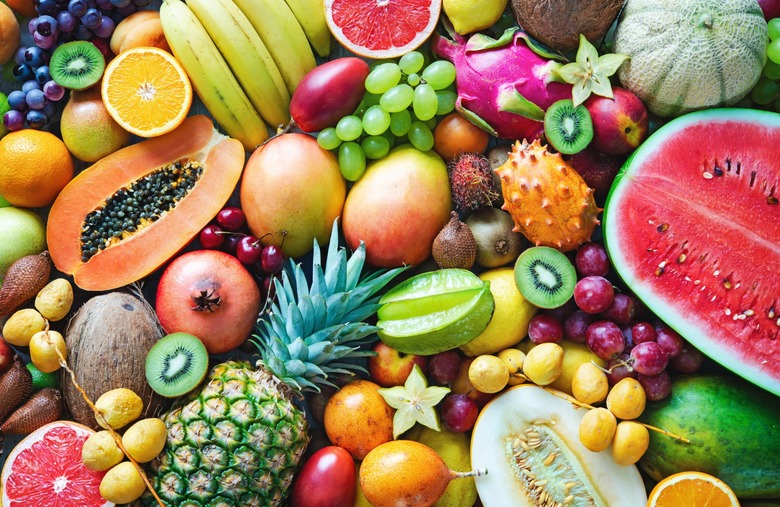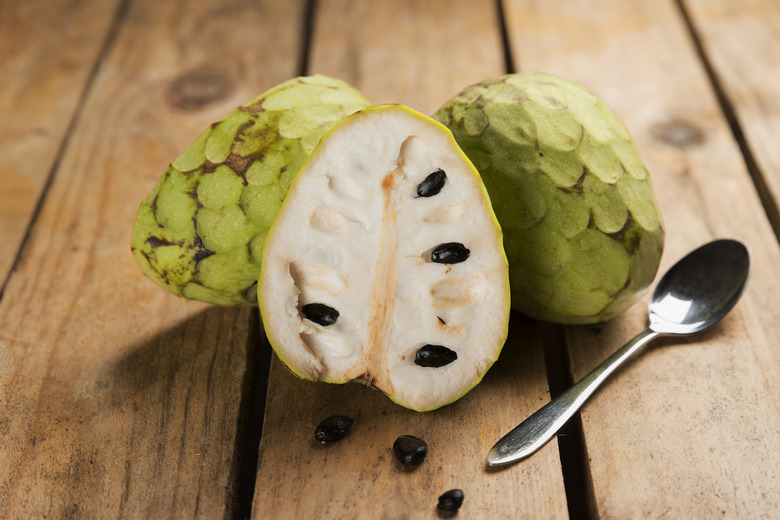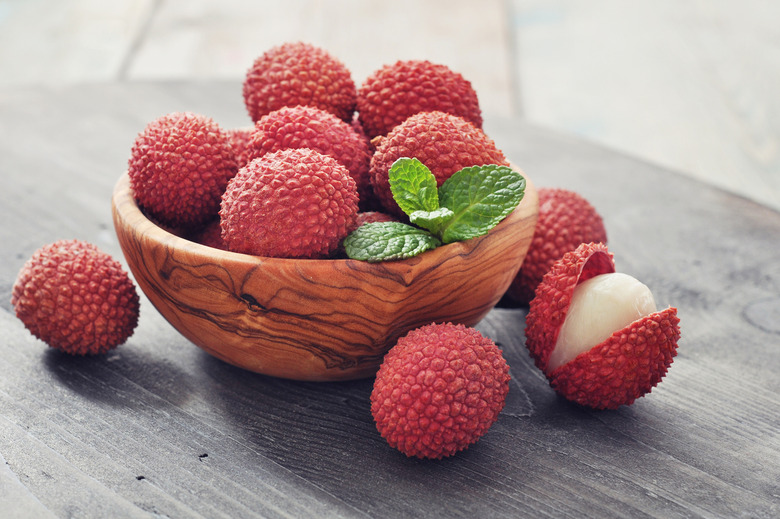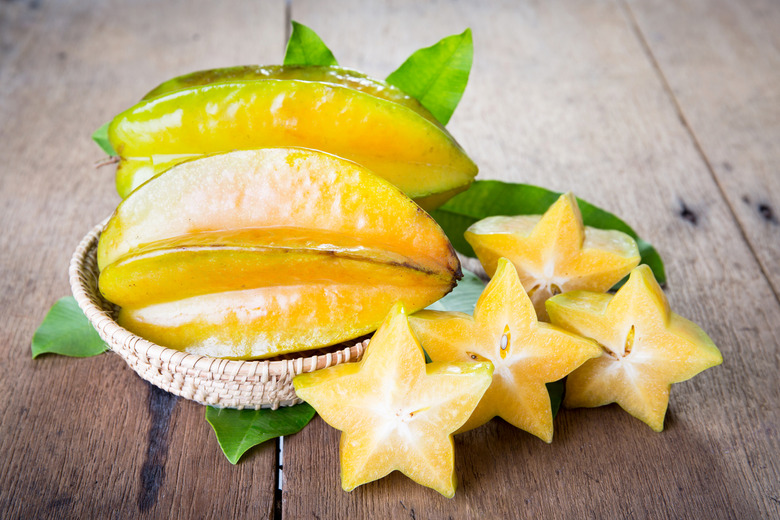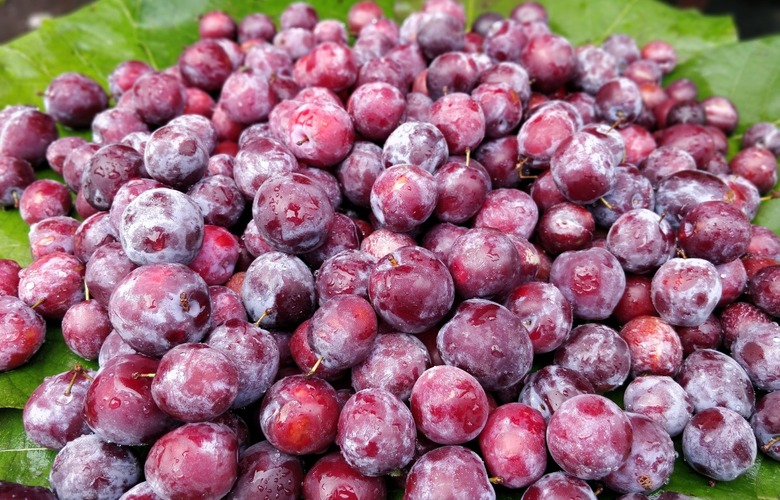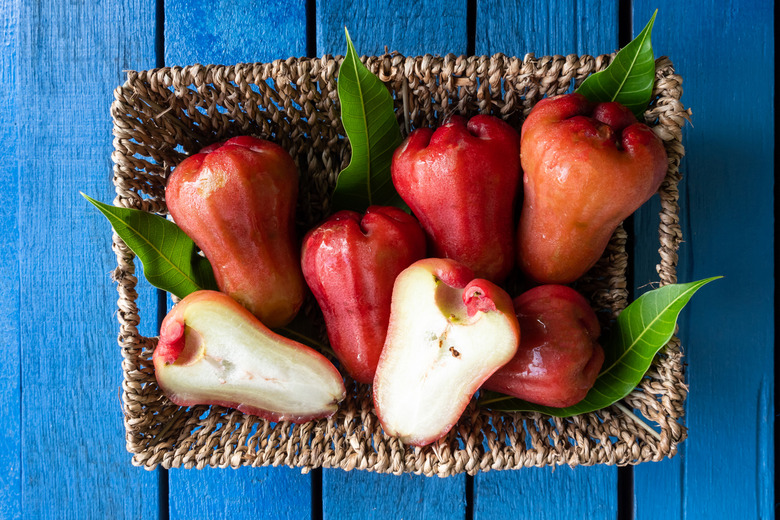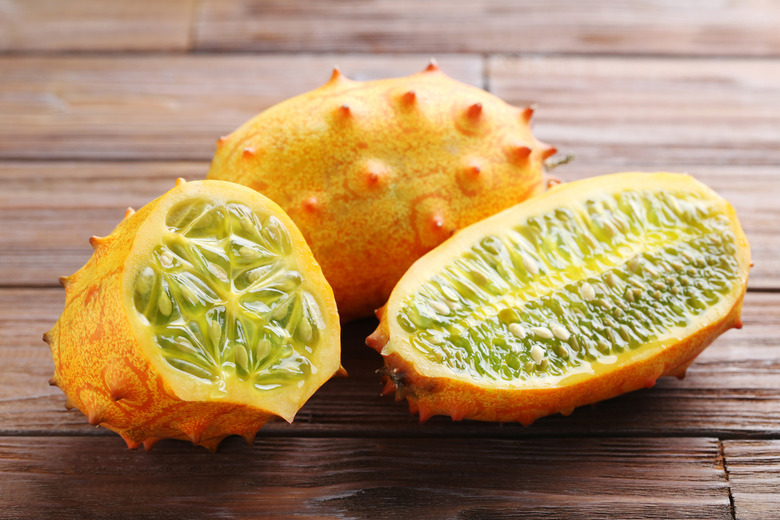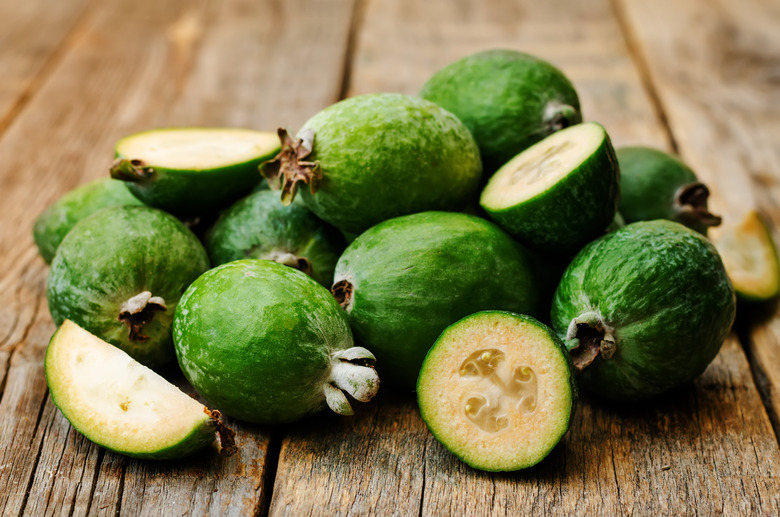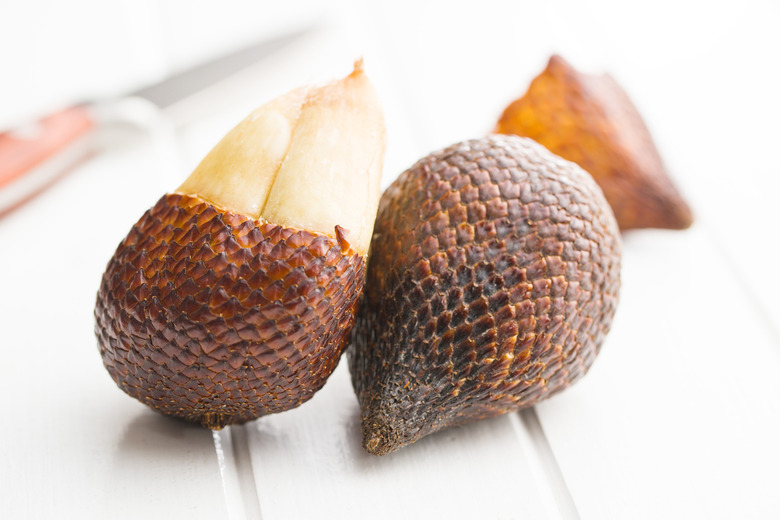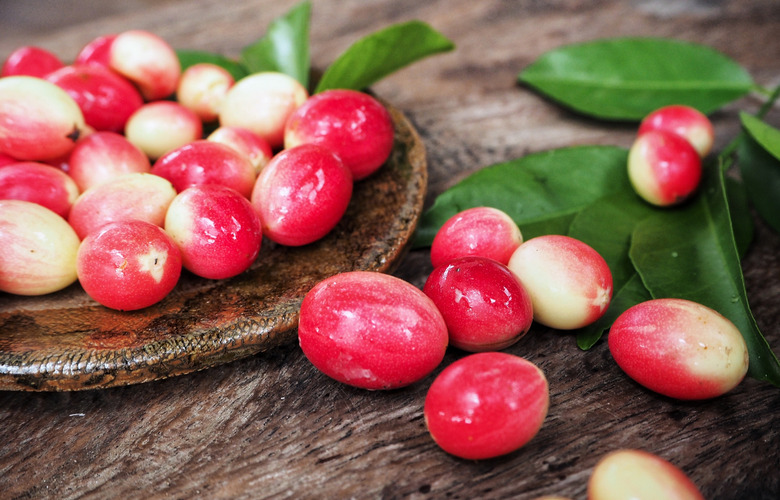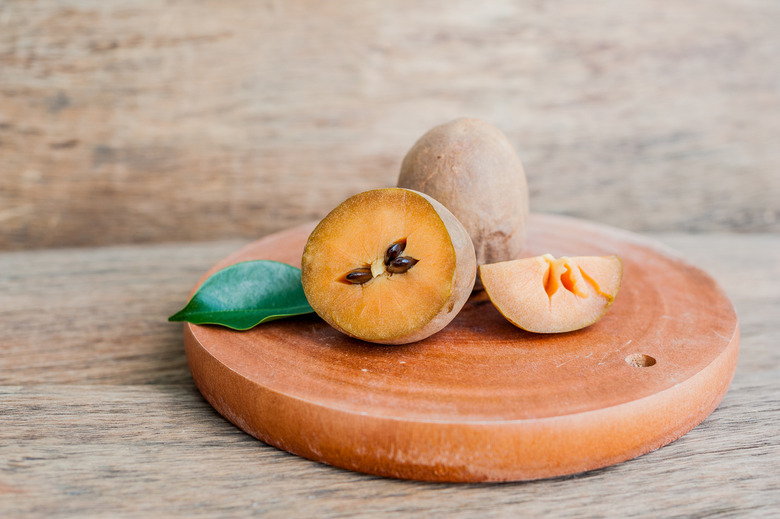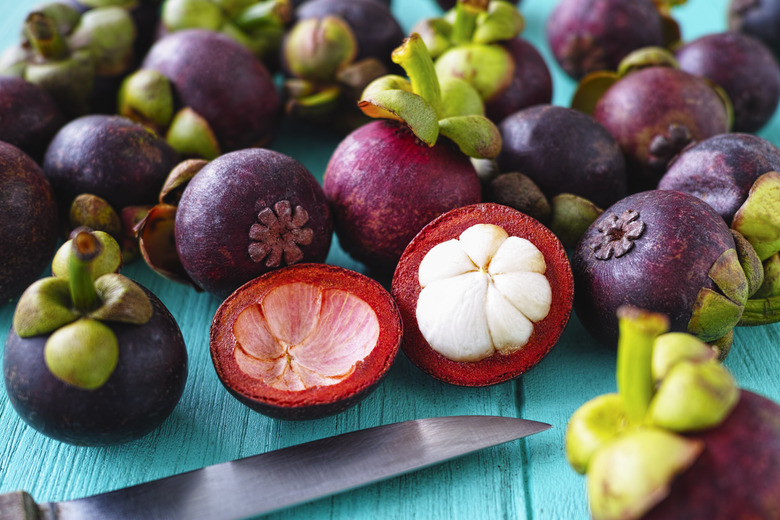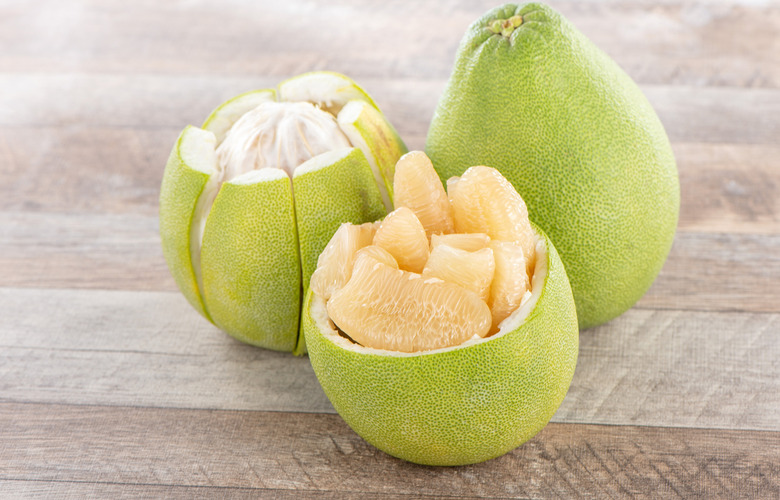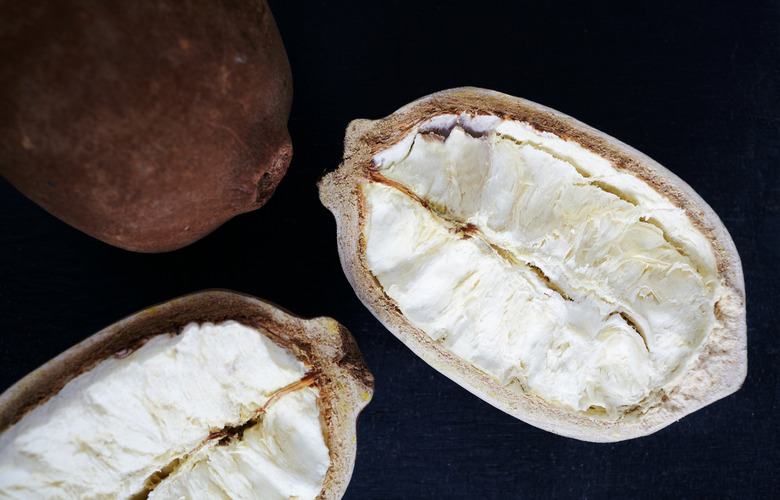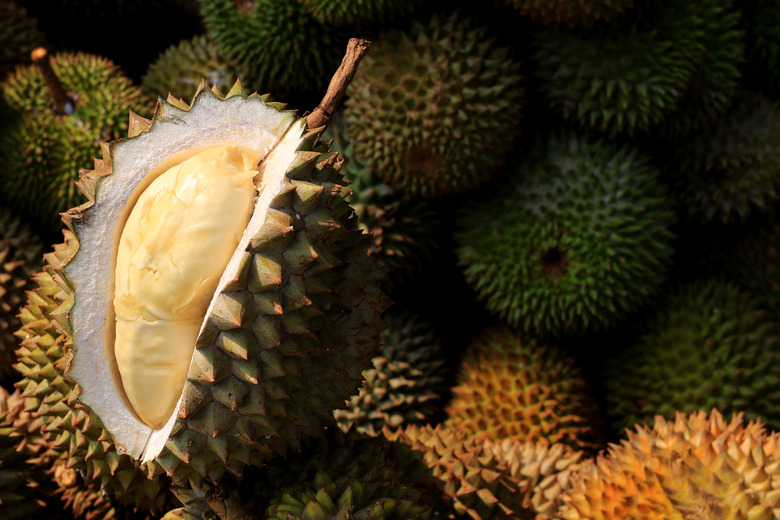15 Fruits You've Never Heard Of That You Need To Try
Delicious and fantastic for your health, eating fruit is a great way to indulge your sweet tooth and increase your intake of dietary fiber and various vitamins. While eating an apple a day is a good idea, however, there's an entire world of fruit out there outside of the typical everyday produce you're probably used to.
Because of their many health benefits, such as supplying nutrients and a reducing risk of diabetes, fruits are popular throughout the world — but the types of fruit available may vary depending on location. In Asia, Africa and South America, you will come across many exotic fruits you may not have heard of despite their local popularity. With interesting — and sometimes downright disgusting — smells and surprising flavors unlike any food you've known, these fascinating fruits are absolutely worth a try.
Cherimoya
Once declared "the most delicious fruit known to men" by Mark Twain, cherimoya is one of the healthiest foods you've never heard of and grown in tropical regions throughout the world, but especially in Central and South America. The green exterior of the conical fruit takes on the appearance of scales, but on the inside, you'll find creamy, white flesh that some have described as a combination of banana, pineapple, strawberry, papaya and peach.
Lychee
Lychee's thin and rough exterior contains a fleshy interior with a sweet, floral smell and taste. It's popular throughout China, South Asia, Southeast Asia, Brazil, South Africa and the Caribbean, as well as Australia and the southeastern U.S.
Carambola
The distinctive ridges of carambola create a star shape when the fruit is cut, hence it is also referred to as star fruit. Native to Indonesia and the Philippines but grown in tropical climates throughout the world, carambola is commonly eaten in Southeast Asia, Micronesia, the South Pacific and parts of East Asia. The fruit is a bright yellow color, sometimes with traces of green, when ripe and has a crunchy and juicy texture with a tart taste that has been compared to a combination of apple, grape, pear and citrus fruits.
Falsa
Native to South and Southeast Asia, falsa is a type of berry that grows in the summer and is known for its sweet and sour acidic taste similar to black currant or cranberry. Its color ranges from a reddish purple to black when ripe, and it is also popularly made into a juice or sherbet for keeping cool or even helping with digestion.
Wax apple
Actually a bell-shaped berry that tastes nothing like an apple, wax apples are most commonly red but also come in colors that range from white to green, red to crimson, or purple to black. Its thin skin has a sheen that gives it a waxy appearance, and the inside is white and spongy with a flavor like that of snow pears. Also called water apples, rose apples and Java apples among other names, wax apples are native to the Malay Islands, as well as the Andaman and Nicobar Islands, but are also commercially grown in Taiwan and Thailand.
Kiwano
Also known as African horned cucumber, horned melon, spiked melon or jelly melon among other monikers, kiwano has spiked orange skin with lime green flesh that looks like jelly and tastes, some say, like a mix of banana and passionfruit or banana, cucumber and lime. Its peel is also edible and rich in both fiber and vitamin C. The fruit is native to sub-Saharan Africa, and it's currently grown in Australia, Chile, Germany, Italy, New Zealand, Portugal and the U.S.
Feijoa
Feijoa is a South American fruit that's also grown commercially in California and New Zealand. Its green peel is inedible, but the juicy fruit on the inside is white in color and similar to guava in texture, which is why it's also sometimes called pineapple guava or guavasteen. Feijoa has a distinctive, perfume-like smell and a flavor that some have compared to a combination of apple, pineapple and mint.
Salak
Due to the reddish-brown, scaly appearance of its peel, salak is also known as snake fruit. When peeled, it reveals three white lobes of fruit that look and feel like garlic cloves but taste sweet and acidic. Salak is grown in Indonesia, and the two favorite types are salak pondoh, a drier and crumbly variety from Java, and salak Bali, a crunchy, moist type from Bali.
Miracle fruit
Miracle fruit gets its name from the fact that it contains the miraculin glycoprotein which, when eaten, causes any sour foods — such as lemons, pickles or radishes — eaten right after it to taste sweet. The fruit goes by many names such as miracle berry and sweet berry, as well as, in its native West Africa, agbayun, asaa, ledidi and taami. The red berries themselves have a mild flavor that's both sweet and tangy.
Sapodilla
Sapodilla is actually a large berry that ranges in color from a pale yellow to a light, earthy brown and has a grainy texture to its skin, similar to kiwi, with anywhere from one to six hard, black seeds on the inside. Also called chikoo, naseberry, níspero and sapota among other names, sapodilla has a sweet and malty flavor like that of caramelized pear. While it's native to southern Mexico, Central America and the Caribbean, it's also popular in South and Southeast Asia.
Mangosteen
Grown primarily in Southeast Asia and southwest India, as well as Colombia, Florida and Puerto Rico, mangosteen has a sweet and tangy taste with a white fleshy and fibrous center inside an inedible, dark red or purple exterior.
Pomelo
A citrus fruit also native to South and Southeast Asia, pomelo is also grown in the U.S. and the Caribbean. While its peel is typically a pale green or yellow when ripe, the inside fruit is white, pale yellow, pink or red in color and tastes like a sweet, milder grapefruit.
Cupuaçu
Brazil's national fruit is related to cacao, with an interesting smell that some of described as a mix of both chocolate and pineapple. Concealed inside a hard, brown exterior, cupuaçu's white pulp tastes like a mix of banana, passion fruit, pear and melon.
Buddha’s hand
Buddha's hand, or fingered citron, gets its name from the finger-like sections of the fruit, which is green to yellow in color and, unlike other citrus fruits, typically does not have any pulp or juice. Originating in the Himalayan region and eaten throughout East and Southeast Asia, Buddha's hand has a taste like that of a nonbitter lemon peel and a strong lemon blossom fragrance that makes it popular for zesting and flavoring.
Durian
The bulky, spiked appearance of durian has earned it the title "king of fruits," and its potent, unpleasant stench has earned it quite the reputation as well. Still, the fruit is grown throughout Southeast Asia, where it is quite popular and eaten in a variety of ways.
More from The Daily Meal:
Plants and Flowers You Didn't Know You Could Eat
The Best Foods for Healthy, Glowing Skin
Cheeses From Around the World Everyone Needs to Try
